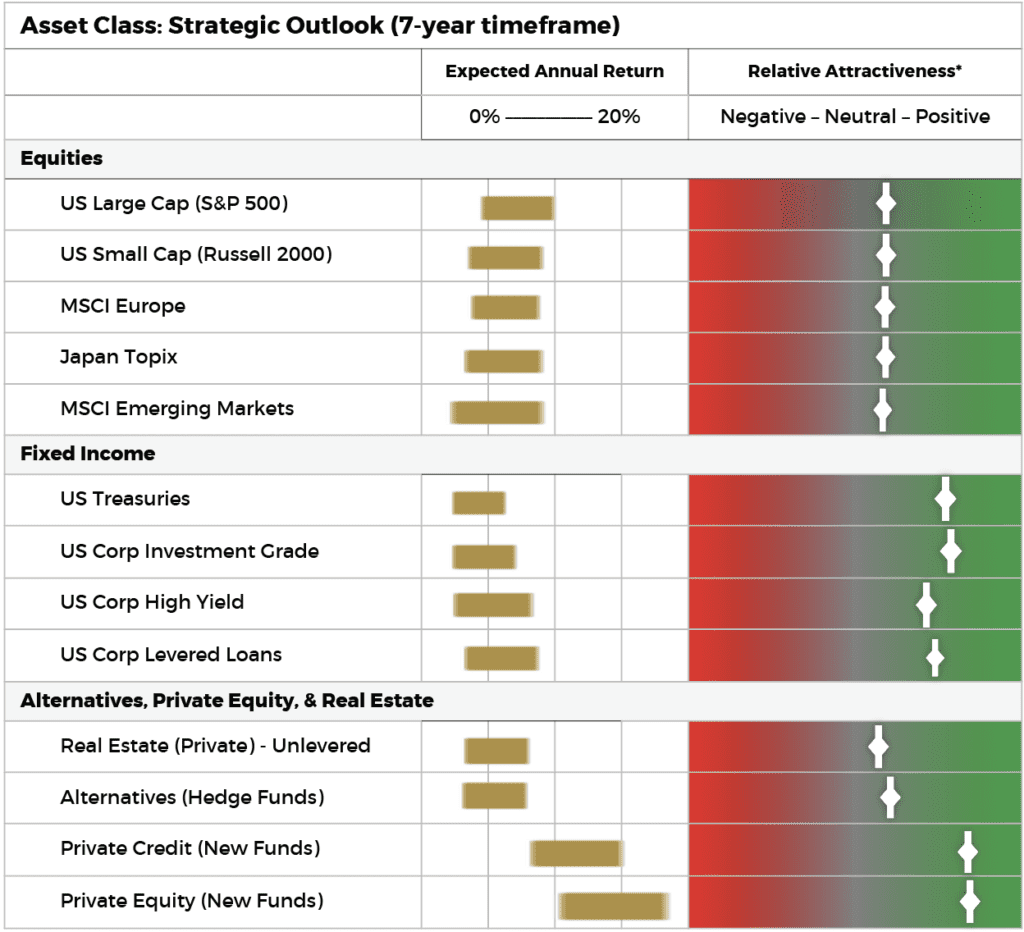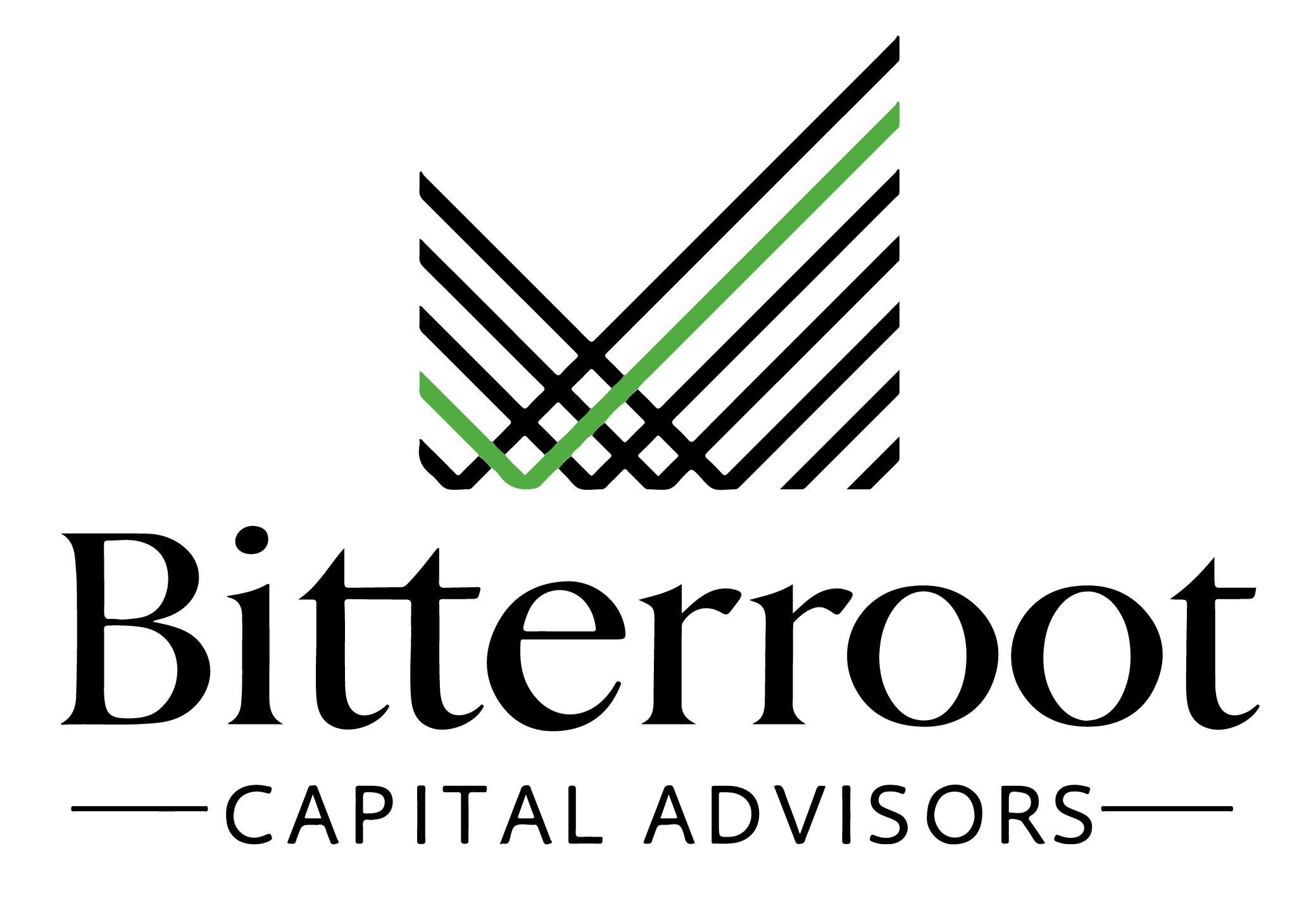We consider the following factors when developing our 7-year forecasts.
Interest rates are likely to decline from current levels but will not return to the ultra-low-levels experienced between 2009-2021.
Corporate profit margins will be influenced by two opposing factors. On the one hand, onshoring and less labor flexibility may dampen margins. On the other hand, AI adoption may increase productivity and expand margins.
Geopolitical uncertainty is increasing with regards to the US-China relationship and potential for episodic military conflicts (especially a potential widening of the war in the Middle East).
With equity valuations having increased materially in 2023, we now mid-single digit nominal pre-tax annual equity returns (6.0%-7.0%) over a seven-year forecast period.
We anticipate greater convergence between US and International equity market returns.
While we expect quality and growth stocks to outperform value stocks over the forecast period, the rate of outperformance is likely to be lower than that over the past seven years.
Equity market valuations are generally fair (for international markets) to modestly overvalued (US). Thus, earnings growth and dividends rather than multiple expansion are likely to drive returns.
Potential wildcards (especially for tech-oriented US markets) include adoption pace surrounding generative AI and the resulting potential for above-trend revenue growth and margin expansion.
“Safe” fixed income is still attractive, with shorter-term maturities relatively more compelling.
US and Canadian 1-year government bond yields are yielding 4.8% to 4.9% and 2-year government bonds are yielding 4.1%-4.4%
US 10-Year Treasuries are yielding 4.1% (down from an early October peak of nearly 5%). At these levels, we view longer-term US treasuries with a more neutral lens. While our base case still envisions declines in the 10-year bond to 3.50% to 3.75%, the capital appreciation potential is certainly less now than a few months ago.
We expect mid-single digit returns for US government debt and investment grade bonds over the forecast period.
On a risk-adjusted pre-tax basis, safe fixed income’s return potential is still relatively attractive relative to equities.
Riskier credit assets (high-yield bonds and leveraged loans) are modestly attractive over a mid-term time frame (and versus equities).
US high-yield bonds are now yielding 7.8% with 7-year forecasted annual returns of 6.0%-6.5% (relatively close to US Equities). Leveraged loans are currently yielding 9.8% with expected mid-term annualized returns in the 6.5%-7.0% range.
However, high yield spreads of 338bps are below historical averages and are well below those seen during recessions (600bps-800bps). Should a recession occur, these spreads will likely widen and negatively affect near-term returns.
For new private market strategies (i.e., private equity and private credit,) we continue to forecast higher returns relative to public markets (over a multi-year timeframe).

* The attractiveness of each asset class (as depicted by the positioning of the sliders) is based upon risk-adjusted returns when considering expected returns, volatility, and liquidity. Thus, US Treasuries with mid-single digit returns are shown as highly attractive given a low-risk profile whereas public equities are only rated modestly attractive despite their higher expected return as equities have much greater volatility.

